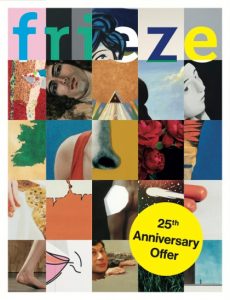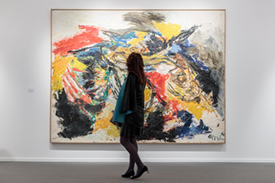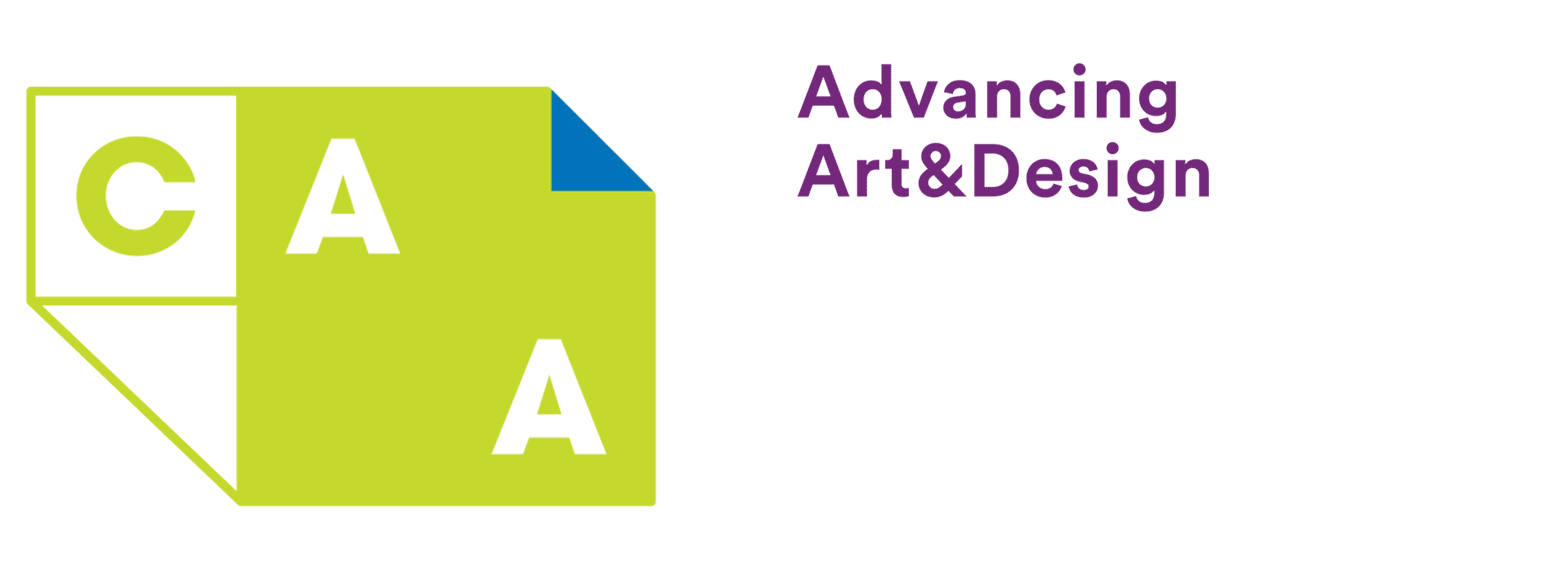CAA News Today
New in caa.reviews
posted by CAA — July 29, 2016
Geoffrey Symcox examines A Kingdom of Images: French Prints in the Age of Louis XIV, 1660–1715, a joint exhibition and companion volume by the Getty Research Institute and Bibliothèque nationale de France. He commends the organizers for “mobilizing the rich resources” of these institutions “to display a series of images otherwise inaccessible to the general public, creating a visual feast of images that illuminates a critical moment in the history of printmaking.” Read the full review at caa.reviews.
Jason Hill takes a look at the exhibition and accompanying catalogue Things beyond Resemblance: James Welling Photographs, organized by the Brandywine River Museum of Art. The featured photographic series is “an homage” to the painter Andrew Wyeth, eliciting “deeply inquisitive expressions (or, better, material accretions) of admiration for an important if counterintuitive artistic influence.” Read the full review at caa.reviews.
George R. Goldner reviews Italian Master Drawings from the Princeton University Art Museum, “a hybrid publication” composed of ninety-five entries on select artworks and an appendix of drawings acquired by the museum since 1977. Despite criticisms, Goldner finds it “a worthwhile publication that brings the best of Princeton’s Italian drawings to a wider audience.” Read the full review at caa.reviews.
Delinda Collier critiques Double Desire: Transculturation and Indigenous Contemporary Art, a collection of fifteen essays edited by Ian McLean that address the marginalization of Aboriginal artists. The volume “is led by postcolonial theory’s focus on the author over the artwork,” though the reviewer is left wondering “how much of the discussion was useful in increasing agency and opportunities for the artists.” Read the full review at caa.reviews.
Caa.reviews publishes over 150 reviews each year. Founded in 1998, the site publishes timely scholarly and critical reviews of studies and projects in all areas and periods of art history, visual studies, and the fine arts, providing peer review for the disciplines served by the College Art Association. Publications and projects reviewed include books, articles, exhibitions, conferences, digital scholarship, and other works as appropriate. Read more reviews at caa.reviews.
A Radical Change: An Interview with Irving Sandler
posted by Christopher Howard — July 29, 2016
The art critic and historian Irving Sandler was a regular contributor to ARTnews and other magazines in the 1950s and 1960s. He is best known for The Triumph of American Painting: A History of Abstract Expressionism (London: Pall Mall, 1970) and its follow-up, The New York School: The Painters and Sculptors of the Fifties (New York: Harper and Row, 1978). Born in New York in 1925, Sandler turned 91 years old on July 22.
He and his wife, Lucy Freedman Sandler, a historian of medieval art and an accomplished author in her own right, are CAA life members. Both scholars have a long involvement with CAA spanning several decades: Lucy served as president of the Board of Directors from 1981 to 1984 and organized the 1978 Annual Conference with her husband. Both have spoken many times at the conference; they have organized and moderated numerous panels and sessions as well. In addition, Irving was part of a group of CAA members who introduced a new format to Art Journal, back in 1979.
Sandler’s second book of memoirs, Swept Up by Art (Brooklyn: Rail Editions, 2015), follows his first, A Sweeper-Up after Artists (New York: Thames and Hudson, 2003). Christopher Howard, CAA managing editor, visited Sandler in May 2016 at his New York apartment to talk about his recent book and about his involvement with CAA over the years.
CAA: Let’s start with Art Journal. In the late 1970s you and a handful of others—Anne Coffin Hansen, Ellen Lanyon, George Sadek—got together to reinvent the publication.
Irving Sandler: That is pretty much it. We took the journal, which had become pretty moribund—it was sort of run by an old guard—and we turned it into something much more interesting by doing thematic issues, and also getting interesting editors to do it. It’s still working more or less that way.
Yes, it is. Editors have three-year terms—but they get a longer time span to take it over. You even produced one of those early issues, in Winter 1980, yourself.
Yes, I did. This issue was, to my knowledge, was the first issue on modernism and postmodernism, indicating the change that had been taking place in art, and in the art world as well. That was a very good issue.
You and your wife first joined CAA in 1954. How has the teaching of art and art history changed over the last sixty years?
Well, one of the things—the primary thing I believe—that’s changed would be the introduction of contemporary art into curricula. That simply wasn’t done. In places like the Institute of Fine Arts, you couldn’t write a dissertation on an artist who wasn’t dead for a century. And suddenly, not only do you have contemporary art, but the primary emphasis, in our art-history programs now, is on the contemporary. That’s a radical change to the entire approach to art.
A Radical Change: An Interview with Irving Sandler
posted by Christopher Howard — July 28, 2016
The art critic and historian Irving Sandler was a regular contributor to ARTnews and other magazines in the 1950s and 1960s. He is best known for The Triumph of American Painting: A History of Abstract Expressionism (London: Pall Mall, 1970) and its follow-up, The New York School: The Painters and Sculptors of the Fifties (New York: Harper and Row, 1978). Born in New York in 1925, Sandler turned 91 years old on July 22.
He and his wife, Lucy Freedman Sandler, a historian of medieval art and an accomplished author in her own right, are CAA life members. Both scholars have a long involvement with CAA spanning several decades: Lucy served as president of the Board of Directors from 1981 to 1984 and organized the 1978 Annual Conference with her husband. Both have spoken many times at the conference; they have organized and moderated numerous panels and sessions as well. In addition, Irving was part of a group of CAA members who introduced a new format to Art Journal, back in 1979.
Sandler’s second book of memoirs, Swept Up by Art (Brooklyn: Rail Editions, 2015), follows his first, A Sweeper-Up after Artists (New York: Thames and Hudson, 2003). CAA visited Sandler in May 2016 at his New York apartment to talk about his recent book and about his involvement with CAA over the years.
CAA: Let’s start with Art Journal. In the late 1970s you and a handful of others—Anne Coffin Hansen, Ellen Lanyon, George Sadek—got together to reinvent the publication.
Irving Sandler: That is pretty much it. We took the journal, which had become pretty moribund—it was sort of run by an old guard—and we turned it into something much more interesting by doing thematic issues, and also getting interesting editors to do it. It’s still working more or less that way.
Yes, it is. Editors have three-year terms—but they get a longer time span to take it over. You even produced one of those early issues, in Winter 1980, yourself.
Yes, I did. This issue was, to my knowledge, was the first issue on modernism and postmodernism, indicating the change that had been taking place in art, and in the art world as well. That was a very good issue.
You and your wife first joined CAA in 1954. How has the teaching of art and art history changed over the last sixty years?
Well, one of the things—the primary thing I believe—that’s changed would be the introduction of contemporary art into curricula. That simply wasn’t done. In places like the Institute of Fine Arts, you couldn’t write a dissertation on an artist who wasn’t dead for a century. And suddenly, not only do you have contemporary art, but the primary emphasis, in our art-history programs now, is on the contemporary. That’s a radical change to the entire approach to art.
News from the Art and Academic Worlds
posted by Christopher Howard — July 27, 2016
Each week CAA News publishes summaries of eight articles, published around the web, that CAA members may find interesting and useful in their professional and creative lives.
Great Colleges to Work For 2016
The annual “Great Colleges to Work For” survey was administered between March 14 and April 15. All survey-related content in this issue, including college presidents’ statements about what makes their institution a great place to work, was provided by ModernThink, which drew institutional data from the colleges and the US Department of Education. (Read more from the Chronicle of Higher Education.)
Should Colleges Really Eliminate the College Lecture?
Despite the increased emphasis in recent years on improving professors’ teaching skills, such training often focuses on incorporating technology or flipping the classroom, rather than on how to give a traditional college lecture. It’s also in part why the lecture—a mainstay of any introductory undergraduate course—is endangered. (Read more from the Atlantic.)
What Learning People Really Think about Lecturing
Is there really a war on lecturing going on across higher education? Do learning professionals want to kill the lecture? Read Christine Gross-Loh’s “Should Colleges Really Eliminate the College Lecture?” and you would be forgiven in thinking that there is and that we do. The problem is that her description of the current climate bears little resemblance to reality. (Read more from Inside Higher Ed.)
These Four Technologies May Finally Put an End to Art Forgery
Like method actors and bearded brewmasters, the best art forgers are obsessed with authenticity. But thanks to a handful of new authentication technologies, even history’s most painstaking efforts wouldn’t stump today’s art sleuths. (Read more from Artsy.)
How the Rich Are Hurting the Museums They Fund
For museum executives, the dirty secret of expansions has been that they are often motivated by the need to have some exciting new thing to rally board members and interest potential patrons. These institutions depend heavily on rich people to fund them. Those rich people like to pay for flashy new buildings; no one wants to donate to boring old museum upkeep. (Read more from the New York Times.)
Supporting Transgender Students in the Classroom
As the higher-education community continues to work to create a more inclusive learning environment, the needs of gender-variant students are too often overlooked. This article outlines a few ways faculty can create an atmosphere that supports trans-identified and gender-nonconforming students. (Read more from Faculty Focus.)
The Way We Publish Now
All signs point toward an open-access future for scholarship. The pressure from funders as well as from academic authors to publish openly is growing. So is the convergence of the affordances of open web–enabled publishing with the present-day means of scholarly conversation, much of it online. (Read more from Inside Higher Ed.)
How to Resign
Leaving an academic job is different than vacating a nonacademic one. A professor can’t just give two weeks’ notice and walk out the door. I’ve submitted my share of resignation letters and watched others leave their posts, so I’ve gleaned a few tips on how to depart a faculty position gracefully. (Read more from Vitae.)
For CAA Members Only: 3 Exclusive Offers from frieze!
posted by CAA — July 26, 2016
For a limited time only, CAA members can take advantage of three exclusive offers from frieze, the leading magazine in contemporary art and culture. As a CAA member, you can select between a free issue when you subscribe by August 9th, free shipping when you pre-order a copy of Frieze Masters, or discounted Frieze Masters tickets taking place this fall in London! Please see below for details:
 Subscription Offer:
Subscription Offer:
Insightful, intelligent, and exquisitely designed, frieze is the leading magazine in contemporary art and culture. frieze profiles emerging artists and highlights new currents in art practice as well as offering a fresh perspective on more established artists.
In celebration of frieze‘s 25th anniversary we are offering the first issue free to CAA members when purchasing a subscription! (9 issues for the price of 8). All subscriptions will be started with the September issue, which will be published with three different covers, all special commissions by Sarah Cwynar, Chris Ofili and Rosemarie Trockel. You can select which cover you would like to receive (or we can surprise you)!
If you decide to cancel your subscription before your second copy is dispatched (for any reason), we will offer you a full refund.
 Frieze Masters Magazine Offer:
Frieze Masters Magazine Offer:
Frieze Masters Magazine is an annual publication that looks at the art of the past through the lens of the present. Issue 5 includes features on Caravaggio and Hieronymus Bosch. The issue also focuses on the medieval women who painted illuminated manuscripts, Henry James‘s fascination with women looking at classical sculpture and Sigmund Freud‘s preoccupation with Michelangelo. Again, this year, Frieze Masters also includes ‘Artist’s Artists’, for which contemporary artists are invited to discuss a work of art from the past that has influenced them. This year’s respondents include Francesco Clement, Cao Fei, Nancy Grossman, Heather Phillipson, and Fiona Rae, among many others.
Issue 5 is published on 5 September and we are offering CAA members the opportunity to pre-order their copy and receive free shipping on their order.
Frieze Masters London Offer:
Discover several thousand years of art history in a unique contemporary context at Frieze Masters in London (6-9 October 2016). CAA members can enjoy an exclusive offer of 25% off One-Day weekday tickets. Simply purchase tickets and enter code CAA16 at checkout.
A Tactile Art Journal
posted by Christopher Howard — July 25, 2016
 The Summer 2016 issue of Art Journal must be touched to be believed—though there is plenty to enjoy visually as well. For a project by the renowned artist Harmony Hammond, the covers of the journal have been given a waxy coating to help convey the nature of her intensely tactile paintings and prints, featured in a twenty-page portfolio of images. In an accompanying text, Hammond relates the impact on her work of a 2001 censorship incident in San Francisco.
The Summer 2016 issue of Art Journal must be touched to be believed—though there is plenty to enjoy visually as well. For a project by the renowned artist Harmony Hammond, the covers of the journal have been given a waxy coating to help convey the nature of her intensely tactile paintings and prints, featured in a twenty-page portfolio of images. In an accompanying text, Hammond relates the impact on her work of a 2001 censorship incident in San Francisco.
In essays in the journal, Amanda Jane Graham takes a close look at the interweaving of domestic and performing spaces in Trisha Brown’s 1975 dance Locus; Mechtild Widrich explores the effects on the urban fabric of the new-old National Gallery of Singapore, created from a colonial-era court building; and Dan Adler traces the idea of an all-pervasive Apparatus in 1980s and 1990s works by the German photographer Thomas Ruff.
In the Reviews section, Chris Taylor examines James Crump’s film Troublemakers: The Story of Land Art; Joseph L. Underwood reviews Chika Okeke-Agulu’s book Postcolonial Modernism; Charissa N. Terranova looks at the Walker Art Center exhibition and the catalogue Hippie Modernism; and an annotated bibliography by Audra Wolowiec explores the poetics of sound and language.
New in caa.reviews
posted by CAA — July 22, 2016
Leisa Rundquist reviews the exhibition and catalogue for When the Curtain Never Comes Down: Performance Art and the Alter Ego. Curated by Valérie Rousseau for the American Folk Art Museum, the exhibition successfully opens up “new discussions on objects and related performative actions of artists referred to as ‘self-taught’ and ‘art brut.’” Read the full review at caa.reviews.
Marcela Guerrero examines the catalogue for Nancy Hoffman’s exhibition Who More Sci-Fi Than Us? Contemporary Art from the Caribbean. Four region-based essays and an interview “examine the complexity of Caribbean art through the metaphor of science fiction,” though a lack of “intra-island links” leaves readers “somewhat empty handed.” Read the full review at caa.reviews.
Mia L. Bagneris takes a look at the monograph Lynette Yiadom-Boakye. The book includes contributions by Jennifer Higgie, Donatien Grau, and Naomi Beckwith, but the abundance of illustrations of the painter Yiadom-Boakye’s “compelling, portrait-style pictures of black figures” makes it a “celebration of the artist’s oeuvre rather than a critical engagement with it.” Read the full review at caa.reviews.
Caa.reviews publishes over 150 reviews each year. Founded in 1998, the site publishes timely scholarly and critical reviews of studies and projects in all areas and periods of art history, visual studies, and the fine arts, providing peer review for the disciplines served by the College Art Association. Publications and projects reviewed include books, articles, exhibitions, conferences, digital scholarship, and other works as appropriate. Read more reviews at caa.reviews.
The Samuel H. Kress Foundation Funds Redesign of The Art Bulletin
posted by CAA — July 21, 2016
The College Art Association is pleased to announce a grant from the Samuel H. Kress Foundation to support a redesign of The Art Bulletin. CAA, the journal’s editors-in-chief, and its editorial boards have maintained unwavering attention to the quality of the journal’s scholarship for more than one hundred years of publication. Through the generosity of the Kress Foundation, the visual character of the print journal will gain a more contemporary and reader-friendly format, incorporating changes in the presentation of images and text, and an open, inviting look. CAA’s copublisher, Taylor & Francis, is also keen to assist with logistics and production support.
The first issue of The Art Bulletin slated for the new format is March 2017. The redesign is spearheaded by Nina Athanassoglou-Kallmyer, the new editor-in-chief of The Art Bulletin, who joined its editorial board in July. As she notes, “The journal not only represents our discipline and our professional association, but, even more, our wish to offer our members high-quality scholarship, a public platform, and a public profile that will earn them the recognition they merit on an international level.” Kallmyer is working closely with the journal’s editorial board, which identified key design elements during the course of several meetings, as well as with CAA staff.
CAA remains firm in its commitment to excellent scholarship in the print and online versions of its flagship journal, and is grateful to the Kress Foundation for making the redesign of the journal possible.
News from the Art and Academic Worlds
posted by Christopher Howard — July 20, 2016
Each week CAA News publishes summaries of eight articles, published around the web, that CAA members may find interesting and useful in their professional and creative lives.
Life beyond Art School: What Next, Where Next, and How to Make It Happen
A recent symposium held in Glasgow and organized jointly by Glasgow School of Art and Q-Art saw fine-art staff, students, and industry professionals examine the role of art schools and how they prepare students for life after university. Laura Campbell reports on the issues raised and the possible solutions. (Read more from a-n.)
Black Bodies, White Cubes: The Problem with Contemporary Art’s Appropriation of Race
As new political movements like Black Lives Matter have gained influence, social practice has risen in stature and popularity. But a new wave of contemporary work influenced by racial injustices is decidedly more sensational. Artists have made systemic racism look sexy; galleries have made it desirable for collectors. (Read more from ARTnews.)
Who’s Going to Fix My Broken Art?
I shipped a ceramic sculpture across the country to a gallery for an important group show, and they said it was broken when they unpacked it—as in, shattered to pieces. I spent an absurd amount of time and money packing it up so that nothing would break. Is it wrong to ask the gallery to pay for the damage? (Read more from Burnaway.)
The Library of Last Resort
Responsibility for restoring the Library of Congress’s digital mandate has fallen to Carla Hayden. The job she has before her is to prepare the library to serve another century of US citizens that has become most accustomed to consuming information on the internet. (Read more from N+1.)
Rethinking Knowledge in the Internet Age
The internet started out as an assured tool for generating a well-informed citizenry. Over the past fifteen years, that optimism has given way to cynicism and fear—we have taught our children that the net is a swamp of lies spun by idiots and true believers and polluted by commercial entities whose sole aim is to have us click to the next ad-riddled page. (Read more from the Los Angeles Review of Books.)
Why Doing Something as Dull as Copyright Registration Gives You Stronger Rights
Like all things legal, copyright registration is boring and costs money—a standard electronic application costs $55. This is why the task tends to sit at the bottom of the never-ending to-do list that many creators make but never get through. (Read more from the Copyright Alliance.)
New Measures Initiated to Remedy the Surprising Pitfalls of Collecting Video Art
What are you actually buying when you purchase a work of video art? The answer isn’t quite what the uninitiated might expect. The tricky nature of video art has proven to be an unpleasant surprise for collectors in the past. (Read more from Artsy.)
Why Most Academics Will Always Be Bad Writers
For at least a generation, academics have elaborately and publicly denounced the ponderous pedantry of academic prose. So why haven’t these ponderous pedants improved, already? The critics would say the ponderous pedants are doing it on purpose. (Read more from the Chronicle of Higher Education.)
New in caa.reviews
posted by CAA — July 15, 2016
Rachel Middleman visits Earth Machines at the Yerba Buena Center for the Arts. Featuring an international roster of artists, the exhibition reveals how “the local Silicon Valley high-tech industry propels a cycle of innovation and consumption that threatens to outstrip our ability to understand and manage its global, social, and environmental consequences.” Read the full review at caa.reviews.
Martha Lucy examines Gustave Caillebotte: The Painter’s Eye, an exhibition co-organized by the National Gallery of Art and the Kimbell Art Museum. Focusing on fifty canvases produced between 1875 and the early 1880s, the curators tease out “the unusual terms of Caillebotte’s modernity” and his relationship to Impressionism. Read the full review at caa.reviews.
Blair French reviews Billy Apple®: The Artist Has to Live Like Everybody Else, “one of the most significant survey exhibitions ever accorded a living New Zealand artist.” Hosted by the Auckland Art Gallery, the show gives “institutional and public recognition” to the “extraordinarily complex and comprehensive individual practice” of the Pop-Conceptual artist Billy Apple. Read the full review at caa.reviews.
Noriko Murai looks at Edwardian London through Japanese Eyes: The Art and Writings of Yoshio Markino, 1897–1915 by William S. Rodner. The first English-language scholarly monograph on Yoshio Makino, or “Markino,” a Japanese illustrator who lived in London during the early twentieth century, the book provides a “detailed and engaging account of Markino’s most productive years.” Read the full review at caa.reviews.
Caa.reviews publishes over 150 reviews each year. Founded in 1998, the site publishes timely scholarly and critical reviews of studies and projects in all areas and periods of art history, visual studies, and the fine arts, providing peer review for the disciplines served by the College Art Association. Publications and projects reviewed include books, articles, exhibitions, conferences, digital scholarship, and other works as appropriate. Read more reviews at caa.reviews.


